AND SOON THE DARKNESS (1970)
Two young English women go on a cycling tour of the French countryside. When one of them goes missing, the other begins to search for her. But who can she trust?
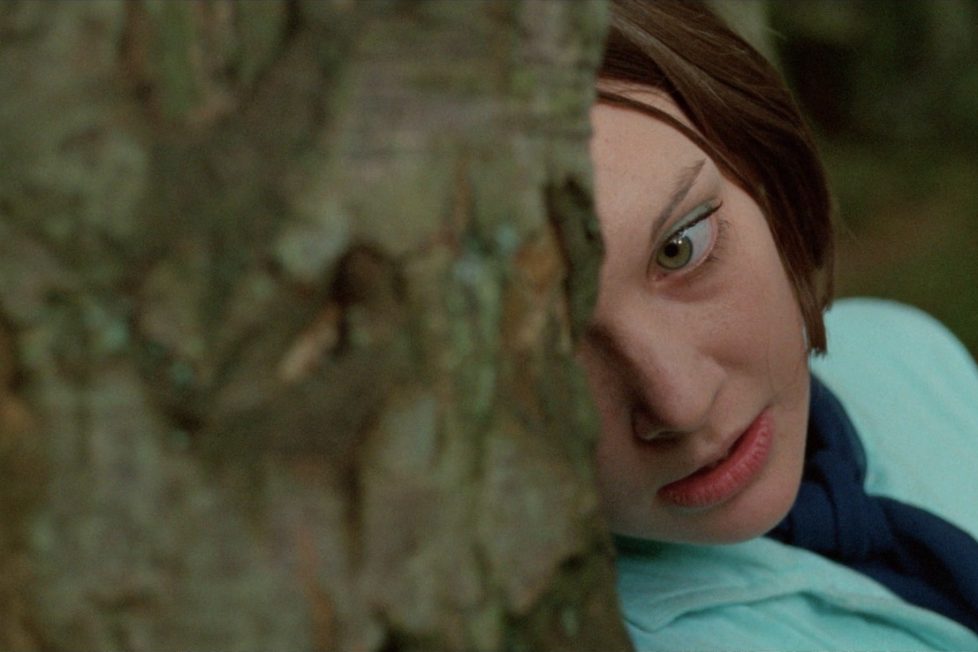
Two young English women go on a cycling tour of the French countryside. When one of them goes missing, the other begins to search for her. But who can she trust?


This could be what’s meant by a ‘taut thriller’. And Soon the Darkness takes a simple premise (a young girl goes missing), adds a slight story (her friend searches for her), then just stretches it out until the tension becomes uncomfortable. And as it finally crosses the line from slow-burn suspense to creeping dread, it takes us out of thriller territory and edges toward horror. I don’t think it would’ve worked so well if not for a perfect combination of talent coming together on both sides of the lens.
The story emerged from the minds of two of the greatest writers to work in British television during the 1960s and 1970s. One was the creator of the Daleks—no not Davros, but Terry Nation. By 1970 he’d quite the CV, having contributed three classic comedy scripts for Tony Hancock, including The Writer (1963), before working on numerous notable episodes of several much-loved cult TV shows like The Baron (1966-67), The Saint (1964-68), The Champions (1968-69), Department S (1969), and The Avengers (1968-69). Readers of a certain age will have just experienced nostalgia overload with visions of ruffled shirts, tight flares, suave suede jackets with massive lapels, dark suits, bowler hats, cool cars, handsome fellas with supersized sideburns and lovely ladies in tight PVC catsuits!
Don’t get too excited because And Soon the Darkness has none of that going on!
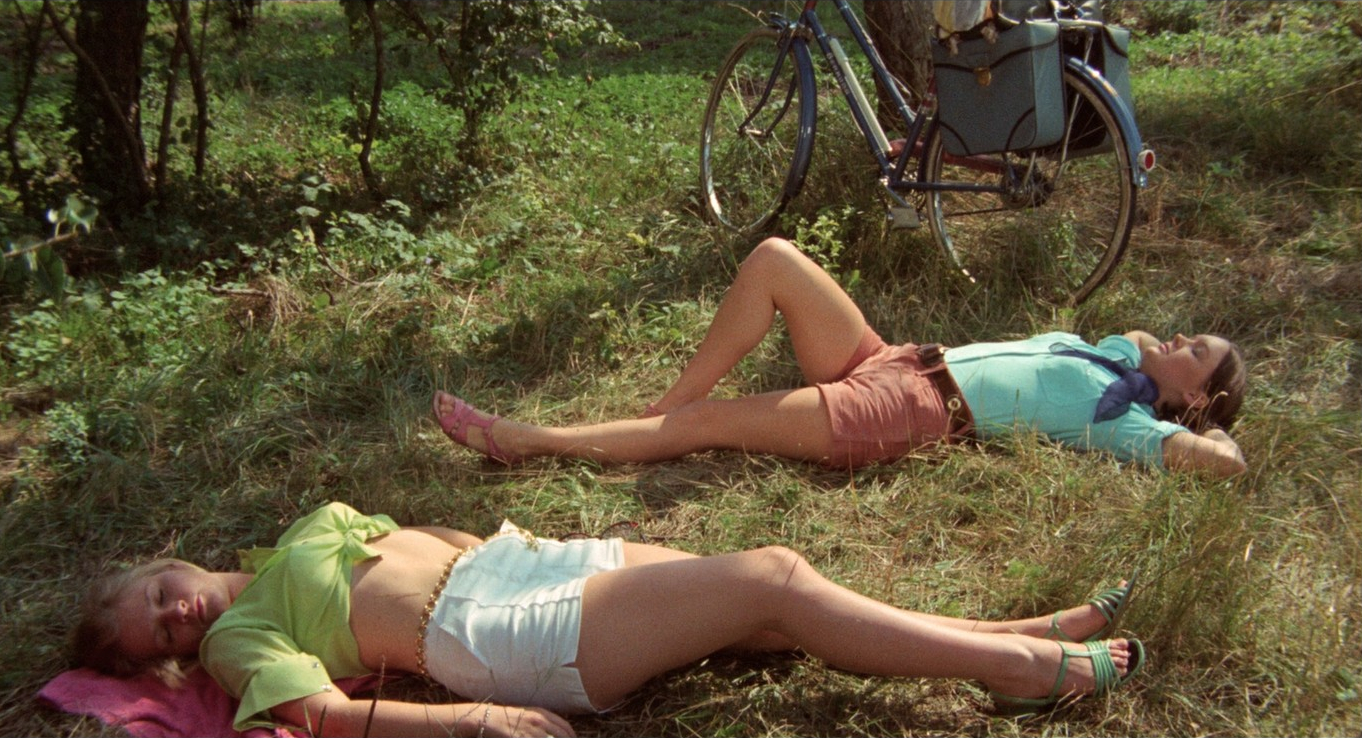
Nation was working with writer-producer Brian Clemens on The Avengers when the show got cancelled, leaving them at a loose end. Around the same time, Associated British Picture Corporation (ABPC) was absorbed by EMI Films. Bryan Forbes, a British actor and film director, was appointed as the new studio’s manager and was on the lookout for scripts he could move swiftly into production.
So, together, Nation and Clemens thrashed out an outline for a feature film in one sitting and Clemens claims to have written non-stop over the following weekend to complete the script for And Soon the Darkness. Forbes commissioned it and the film was slated for immediate production.
With little time to get the package together, Clemens pulled-in help from his colleagues on The Avengers, including his co-producer Albert Fennell and director Robert Fuest. This would be Fuest’s second feature film after his debut Just Like a Woman (1967) and ahead of his marvellous cinematic diptych The Abominable Dr Phibes (1971) and Dr Phibes Rises Again (1972), where delirious pop-art and camp horror collide.
Don’t get too excited because And Soon the Darkness has none of that going on either!
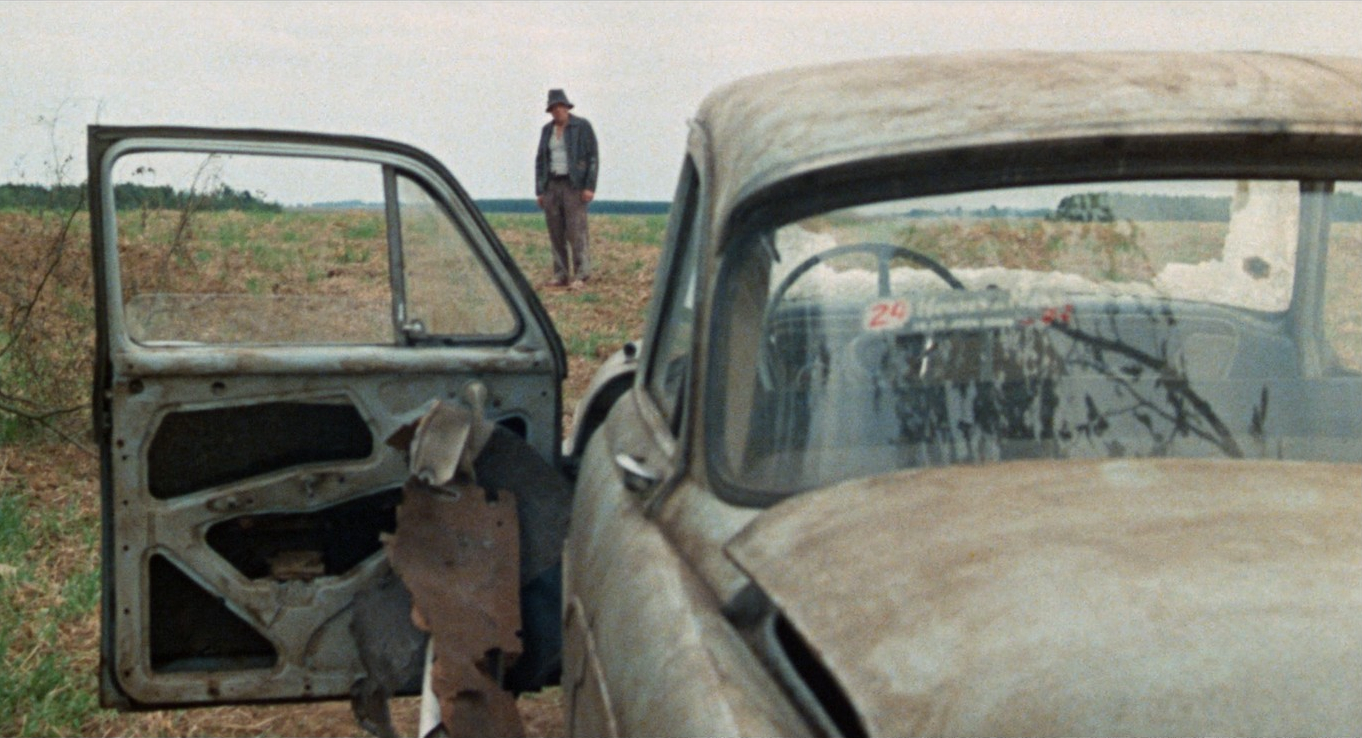
The stripped-down narrative has elements of an Agatha Christie whodunnit with a twist of Edgar Wallace crime mystery, and its style borrows heavily from Alfred Hitchcock. The poster even had the tag line “Remember the way Hitchcock kept you on the edge of your seat?” Fuest must’ve looked at the iconic sequence from North by Northwest (1959) when Cary Grant waits out in the middle of nowhere on a sun-drenched roadside before being attacked by a crop-duster plane.
An open road in bright daylight is the antithesis of the dark Gothic castle in a thunderstorm but can become just as scary in the hands of the right director. And Soon the Darkness swaps the mid-west of America for rural northern France, but there’s an undeniable resonance. In much the same way, there are long periods in when nothing much really happens and the isolation and vulnerability of someone alone and out in the open becomes increasingly intense.
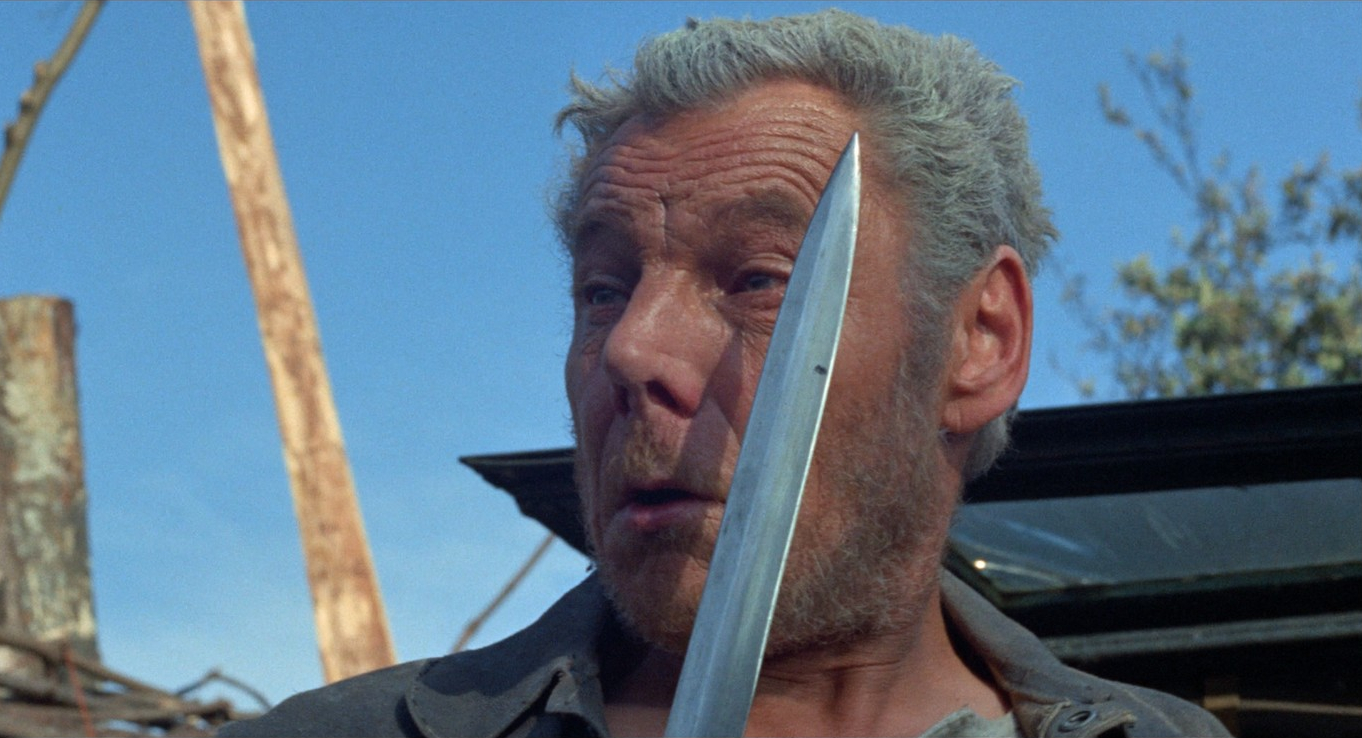
Jane (Pamela Franklin) and Cathy (Michele Dotrice) are two young nurses on a bicycle tour of the Loiret, a sparsely populated agricultural region of France dotted with quaint villages connected by long stretches of desolate road. It’s off the tourist trail, but ideal for bikes as there are so few hills.
Cathy is a typical ’70s blonde, she’s already bored of the flat fields and is thrilled when she catches the eye of a very French-looking chap, Paul (Sandor Elès), at a small café. When he appears to follow them to the next village on his cool Lambretta motor scooter, she wants to stop and give him a chance to catch up again. She feigns tiredness and pauses to sunbathe in a roadside clearing near a rare thicket of woodland.
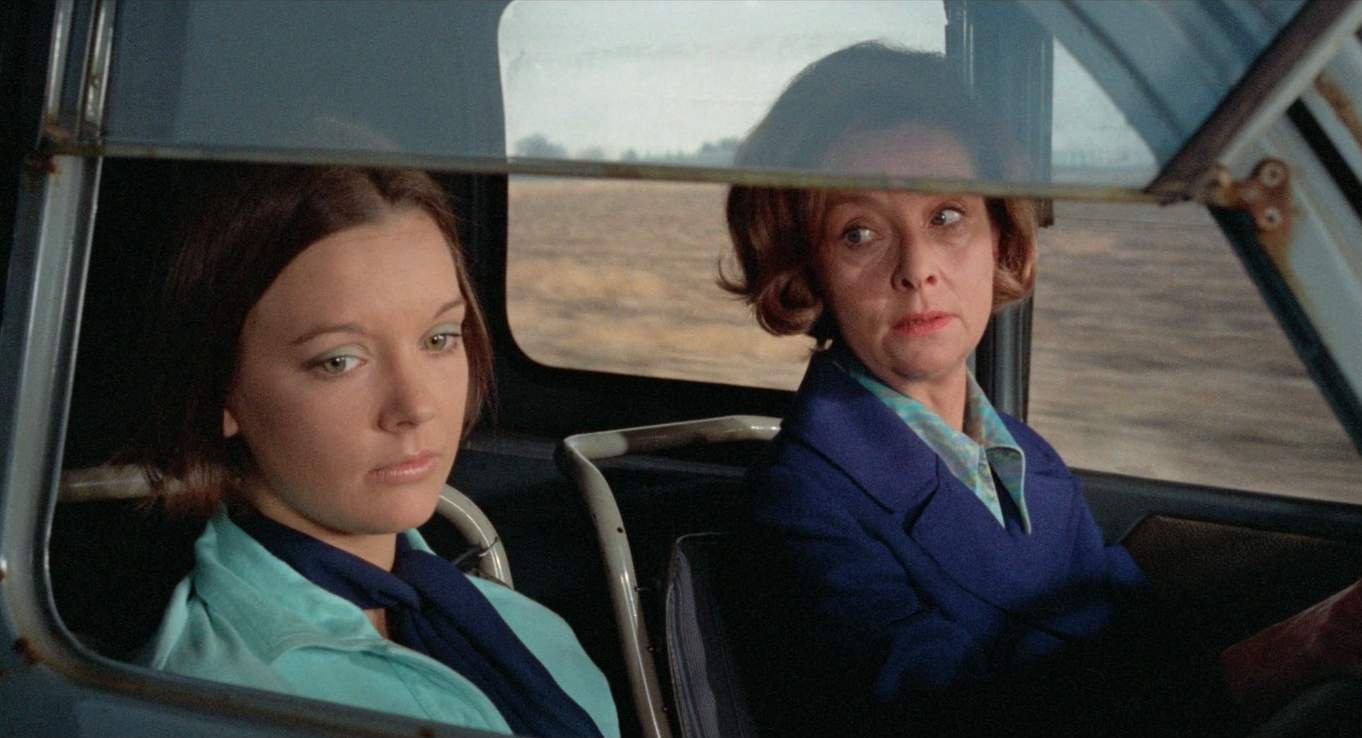
Jane is a more prim-and-proper brunette and after a short rest wants to get along to their next destination, hoping to cover a good distance before nightfall. An argument ensues and Cathy tells her to go ahead and leave her alone! In a fit of pique, that’s just what Jane does but she soon feels the pangs of guilt, so stops to wait for her friend at the next roadside café.
Here she receives very mixed messages from the proprietor, Mme Lassal (Hana-Maria Pravda) who tries to tell her something very important but is unable to express herself through the language barrier. She does manage to say “bad road,” and mimes that it’s not good for a young girl to be on her own along that long stretch. Jane’s concerns immediately deepen and when there’s no sign of Cathy where she left her, she cycles back to the nearest town.

Finding the Gendarmerie closed, she bumps into Paul again, who can speak pretty good English and remembers her blonde companion well. He helps by asking around for information. Jane doesn’t catch all that’s being said but does recognise the word ‘meurtre’ being bandied about far too often. Apparently, there was an unsolved murder of a young blonde tourist a few years earlier on the same stretch of road. From here on, everything starts to feel off-kilter and even in the glaring sunshine, things become gradually darker at every turn.
Jane runs into an array of interesting characters that all seem to have a sleazy or sinister edge to them. It becomes painfully apparent how alone and exposed she is. A stranger in an increasingly strange land. Robert Fuest really keeps tight hold of the pacing and uses space, both geographical and narrative, to great effect.
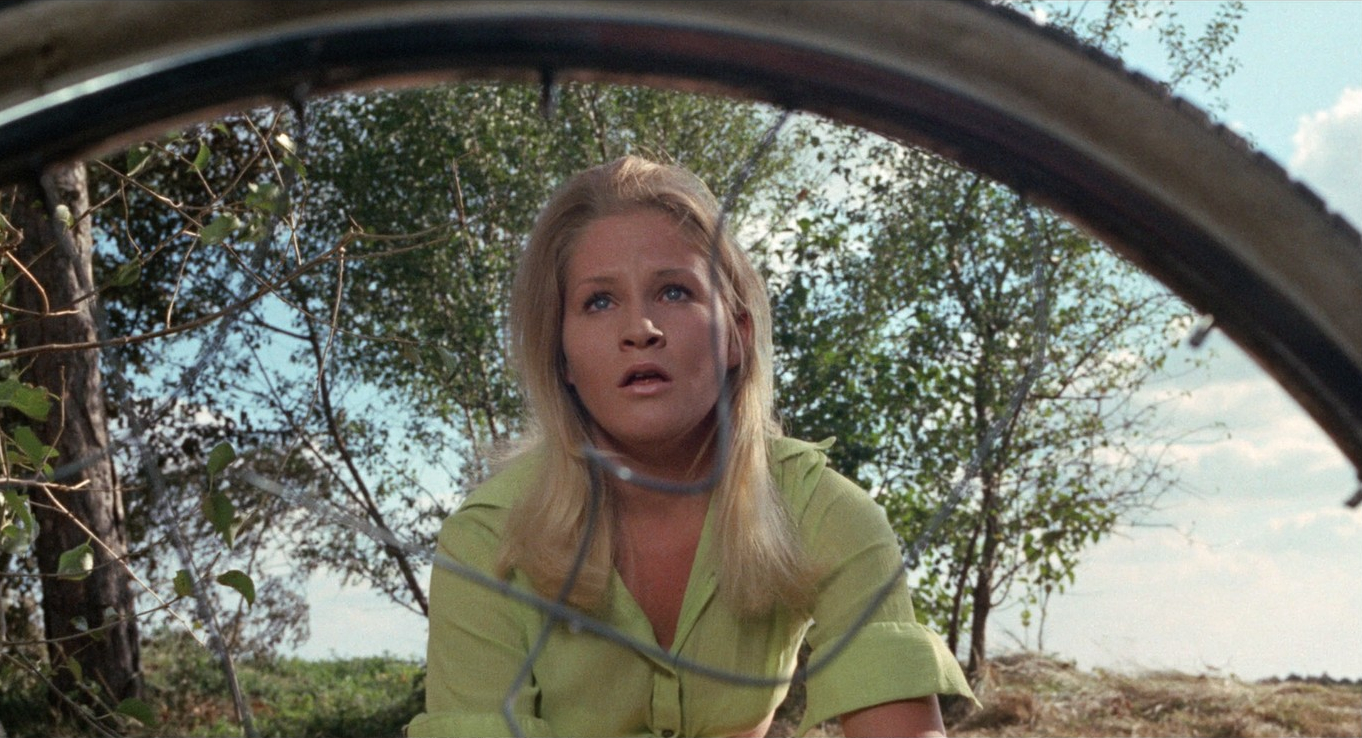
His predatory use of camera puts the audience in the uncomfortable position of a voyeur. Suddenly it seems dangerous for young girls to be riding bikes wearing shorts and summer blouses. There’s a sense of being trapped in the open. Isolated by distances and locked into a futile pattern of repetition. I guess it’s what agoraphobia feels like. Fuest’s slow, deliberate pacing does run the risk of becoming tedious rather than intense and that’s where And Soon the Darkness will fail or succeed as an effective thriller.
For me, it’s a resounding success, mainly due to the engaging performances of a capable cast (and despite a few minor technicalities, like seeing the cameraman reflected in Paul’s sunglasses). Franklin is superb in the lead and carries the whole narrative. She plays Jane as very much a ’70s independent woman and her resilience is as convincing as her vulnerability in these exceptional circumstances. Her every nuance and inflection is so naturalistic. I remember her best in the excellent haunted house movie The Legend of Hell House (1973) and it’s surprising that most of her resume is filled-out with bit parts for TV.
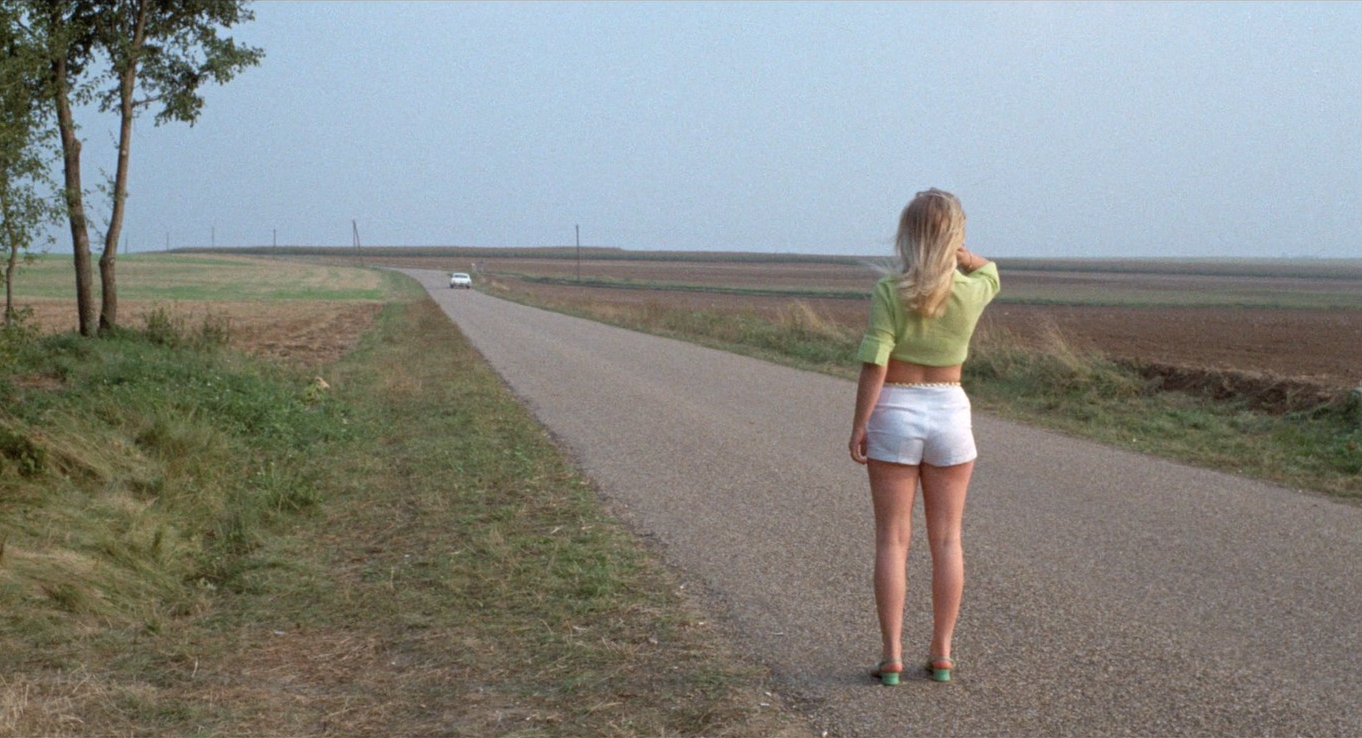
The rest of the cast is a catalogue of small screen stalwarts, reflecting Brian Clemen’s background. Michele Dotrice is best known as a comedy actress in the popular sitcom Some Mothers Do ‘Ave ‘Em (1973–78)—where she put the Betty in “ohhh, Betty!” But she does well here in a dramatic role, bringing a lightness to her character that prevents her becoming too irritating.
Brian Clemens knew Sandor Elès from his appearances in The Baron, The Avengers, and The Saint. Apart from a handful of film roles, including The Evil of Frankenstein (1964) and Countess Dracula (1971) for Hammer Films, he was a hard-working TV actor, topping the casting director’s list whenever someone was needed to play ‘a Frenchman’. He’s wonderfully ambiguous here as the vacationing Paris detective who has a personal obsession with the previous murder that had occurred in the same little thicket of woodland where Cathy disappeared.
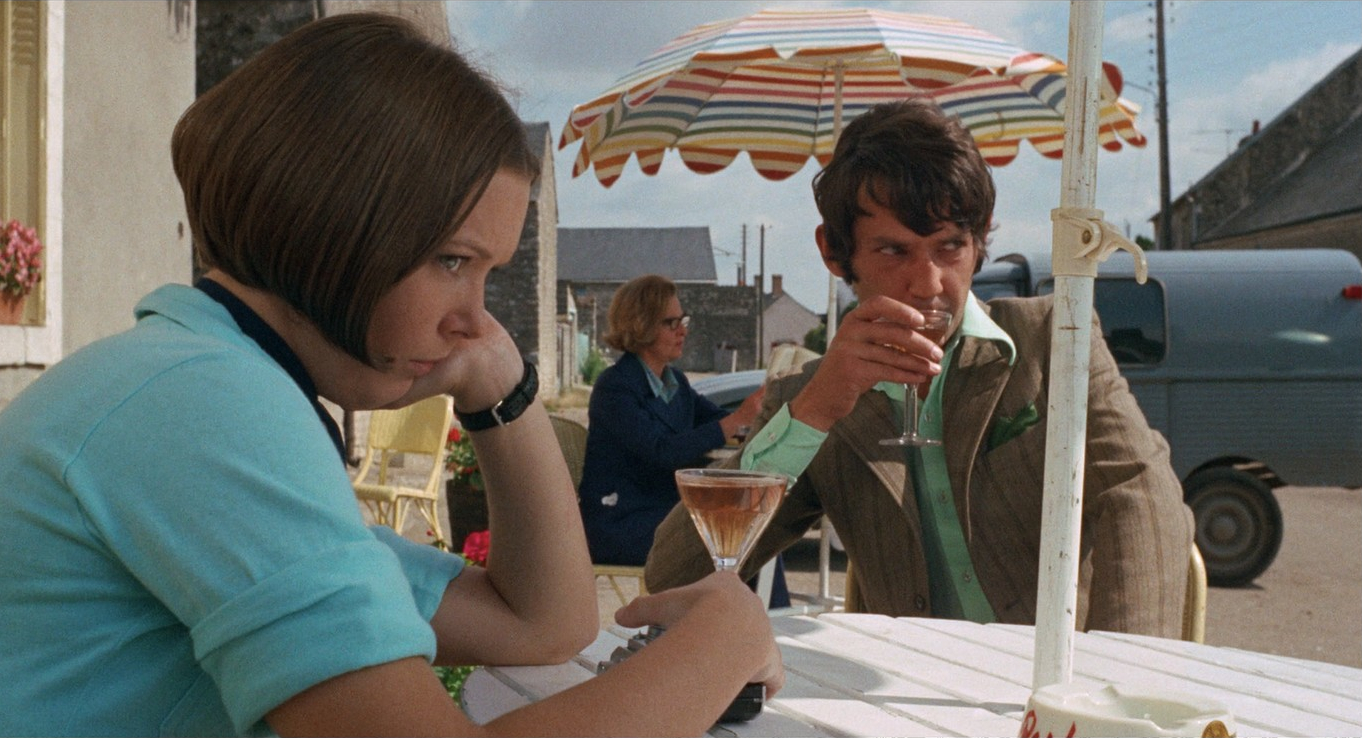
The Gendarme (John Nettleton) is another ambiguous character who seems to have his own agenda and also seems to know more than he’s letting on about that earlier murder. Nettleton is a versatile actor who was just as comfortable in comedy and drama roles, often playing policeman. He’d also appeared in The Avengers, The Champions, and Department S. To the British members of cast and crew on And Soon the Darkness, it must’ve felt like a reunion get-together!
Jane is offered a lift by an expat schoolmistress (Clare Kelly) and their subtly sexually charged conversation brings a lesbian undertone to the mix. Even this seemingly proper lady has an edge of menace and one wonders why she had to leave England and now lives in such an out of the way place.
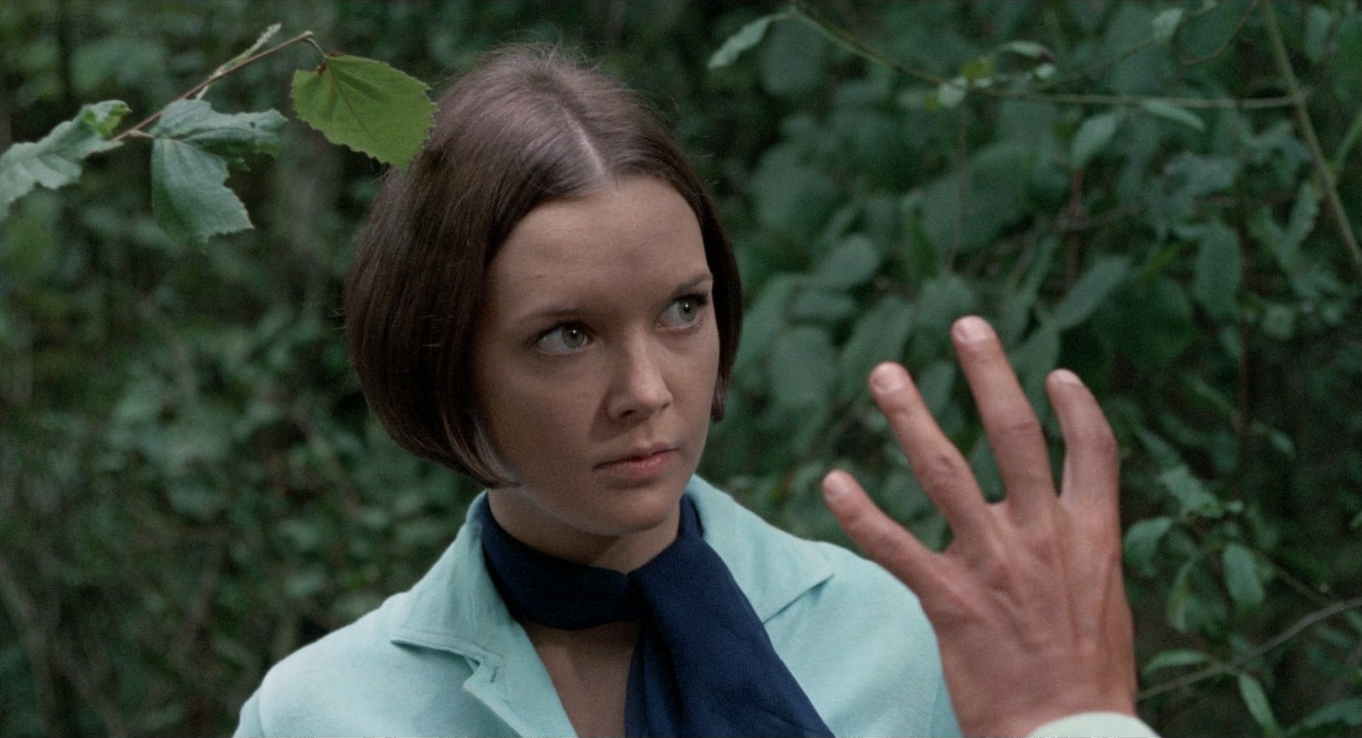
Lone figures tending the fields start to give the whole thing a folk-horror vibe and the film starts to feel more in keeping with the nastier, new style Brit-horror heralded by Witchfinder General (1968)… even objects start to seem suspect! The knife-grinding wheel next to a smoking garden waste incinerator tended by Mdm Lassal’s big husband (Claude Bertrand). The abandoned car wrecks, rusting in fields, hint at dark places where other decaying things could be hidden and never found for years. Then there are numerous farming implements, like pitchforks and threshers… So, when the gendarme’s father (John Franklyn) shows Jane his bayonet from the First World War, we can’t be sure if he’s senile or sinister!
A young girl who strays from the path and gets lost in the woods is an age-old motif from so many European fairy-tales where the Big Bad Wolf is the embodiment of predatory male drives and the woodsman represent the protective aspects of the potential mate. The path, or in this case, the road, is the journey of the young girl who strikes out on her own from the comfort and safety of hearth and home. It’s a scenario fraught with threats and opportunities and the choices the girl makes are cautionary. It’s not surprising that Cathy, the ‘up-for-it’ blonde good-time-girl is the one who vanishes and leaves the sensible, controlling Jane to try and figure things out. But who’s the wolf and who’s the woodman?
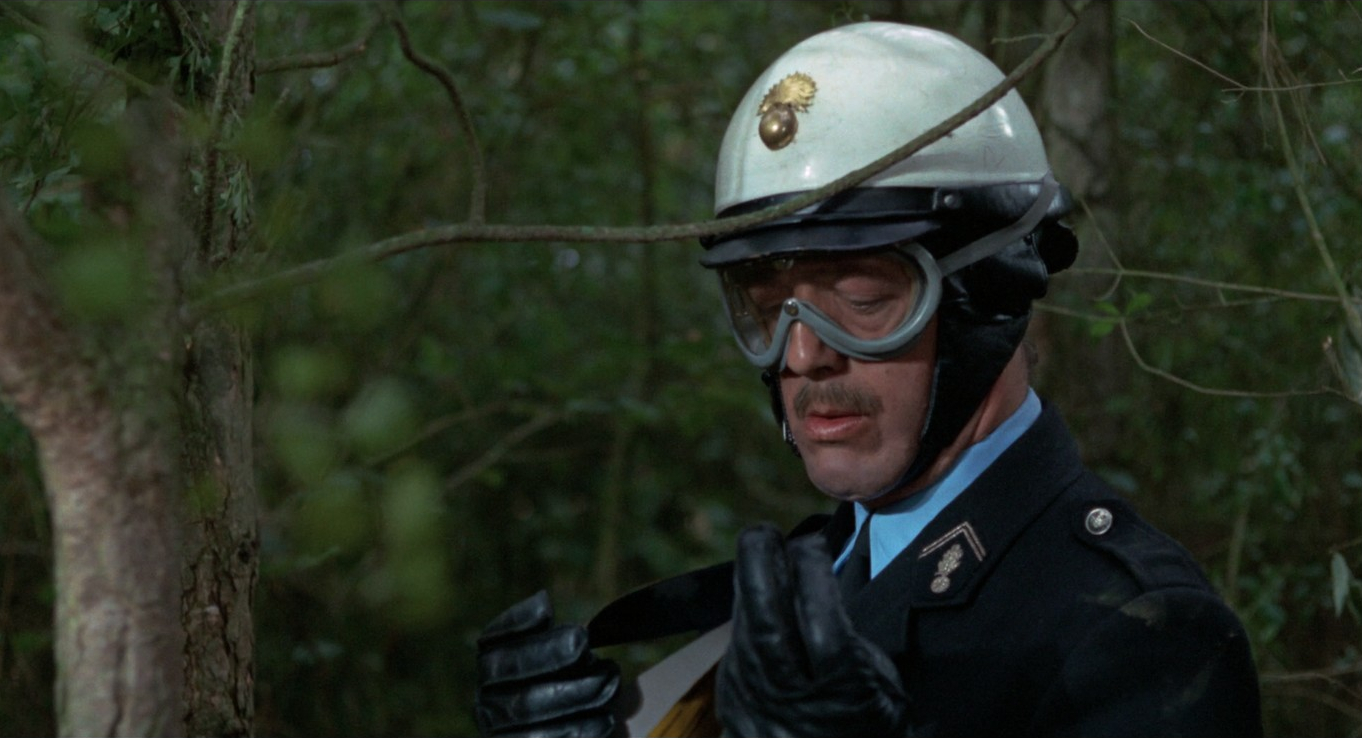
Although it’s firmly placed in the transition from swinging ’60s to the more serious ’70s (and before the smartphone!), the story has a certain timelessness. It could really be set any place or period. The story is packed with unnervingly familiar archetypes and stereotypes, making it a consummate psychological thriller.
It will certainly appeal to those who saw it on TV in their formative years. This was my first viewing and, being a fan of ’70s thrillers, I found it hugely rewarding. These days, when there’s got to be an edit every couple of seconds, its assured pace is most refreshing. I appreciated being given the time and space to become immersed. If you allow yourself to be drawn in, then the finale is a masterclass in suspense, making it the sort of film my mother would describe as ‘wearing’.
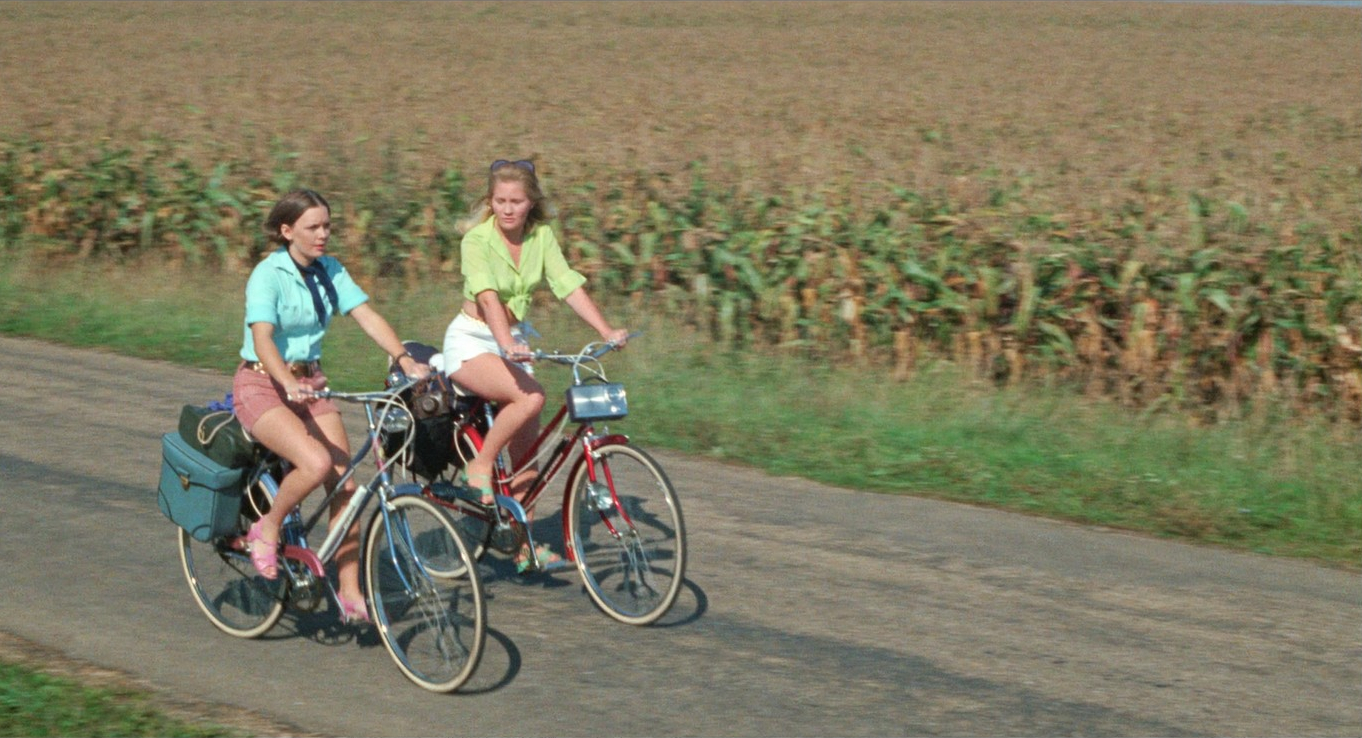
I’m uncertain how it would hold up to repeat viewing as it relies so much on the fun of trying to guess who the culprit is. I was pretty sure I’d worked it out about half-way through, but there were more twists to come. I had, of course, figured it out ahead of the reveal. But once you know, you know! The denouement is so memorable it would take decades to forget whodunit, but having said that, this new Blu-ray from Studio Canal is worth a couple of re-watches if only for the two fascinating audio commentaries.
I’ve heard of the film referred to as a proto-giallo, and I can see that. I wouldn’t be surprised if it was a major influence on the likes of The Texas Chains Saw Massacre (1974) and The Hills Have Eyes (1977). Though there’s hardly any bloody violence at all, it certainly templates the ’70s slasher movie and predicts the recent trend of films about tourists falling victim to dangerous foreigners, exemplified by Eli Roth’s Hostel (2005).
There was a 2010 remake that attempted to modernise it by relocating the story to the more exotic setting of Argentina and sexing it up with bikinis and boyfriends and a more contrived plot involving people trafficking. Instead of drinking Orangina at a roadside café, they’re doing slammers in a dodgy nightclub. It was rewritten by Jennifer Derwingson, directed by Marcos Efron, and starred Amber Heard, Odette Annable, and Karl Urban. It’s faster moving with shorter shots and quicker cuts but doesn’t really stand out among the many other generic thrillers.

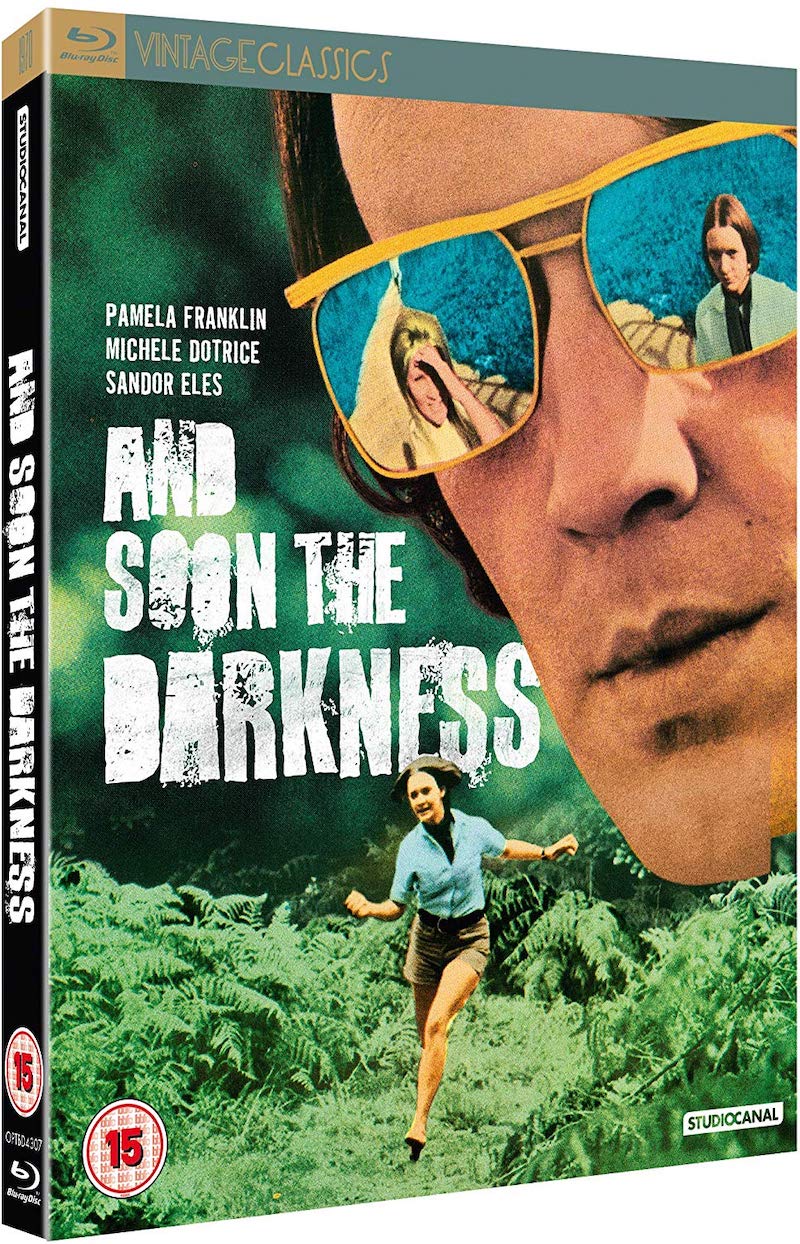
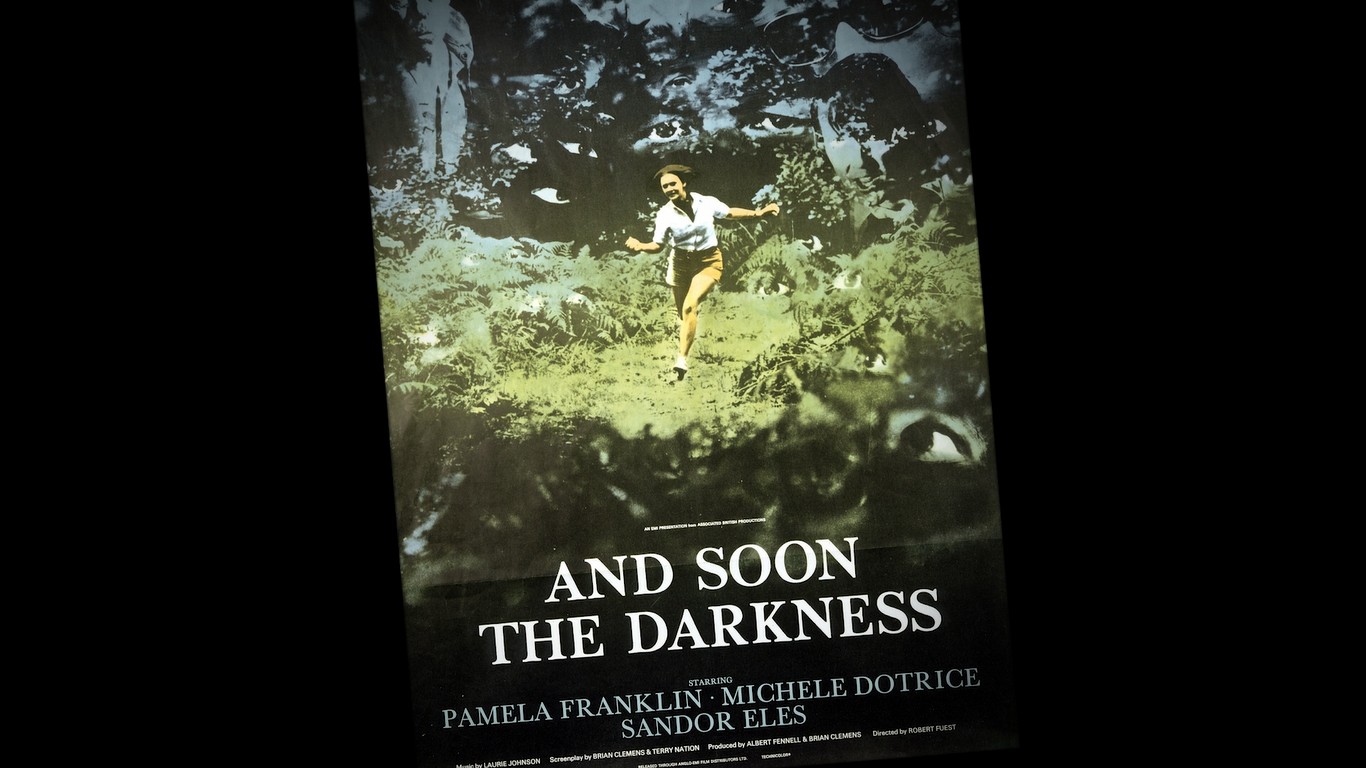
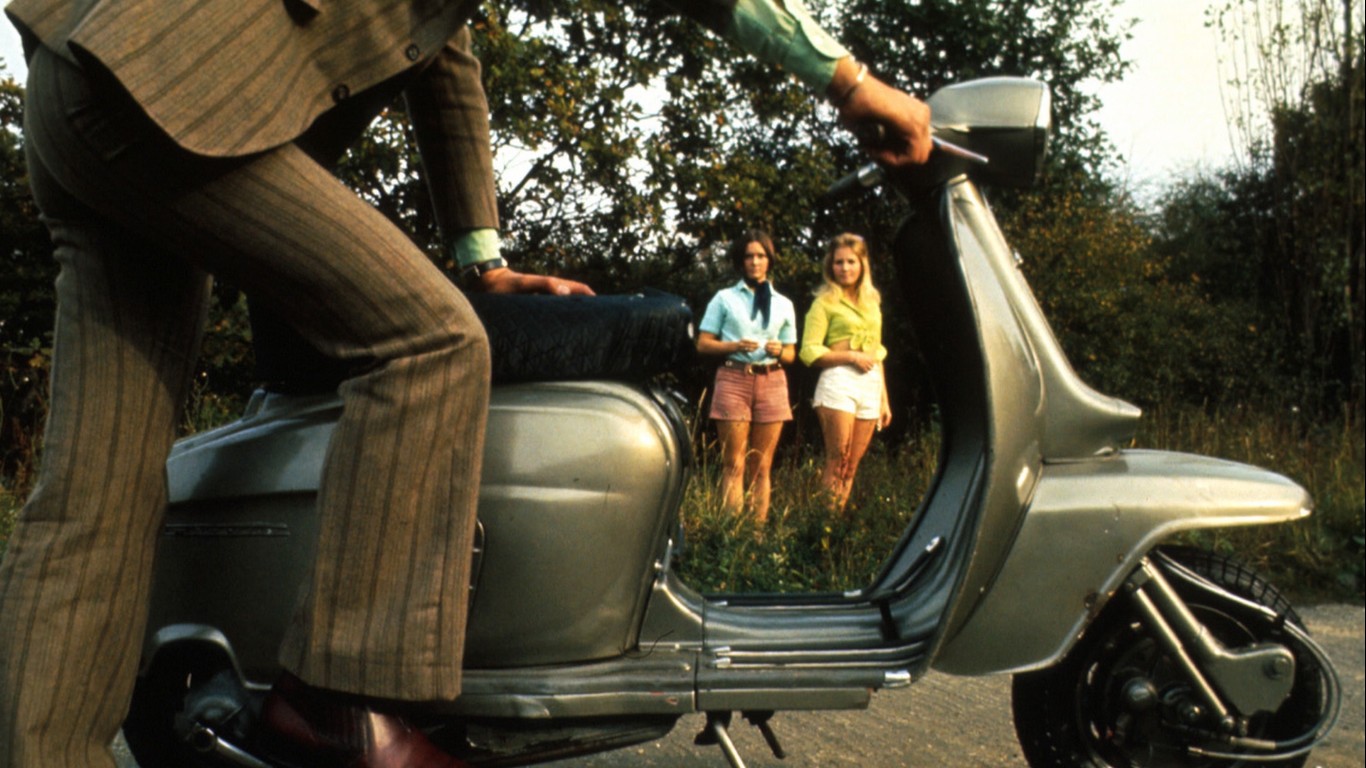
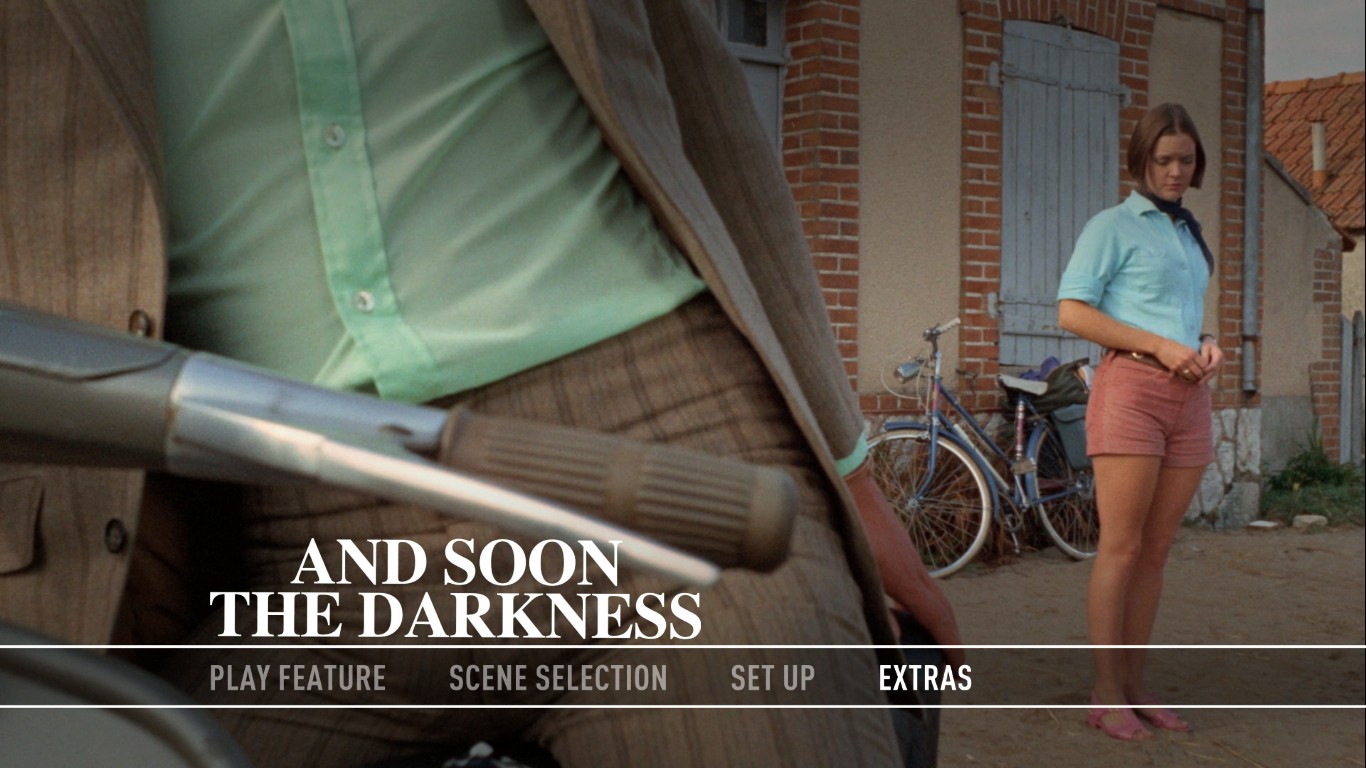

director: Robert Fuest
writers: Brian Clemens & Terry Nation.
starring: Pamela Franklin, Sandor Elès, Michele Dotrice, John Nettleton, Clare Kelly & Hana Maria Pravda.
2 Comments
This site uses Akismet to reduce spam. Learn how your comment data is processed.

Thanks, Steve, that’s probably the best review one of my reviews ever had.
Glad you appreciated the research put into extended reviews like this one.
What a fantastic review. Somehow all of the depth and detail and insight with none of the pretensions that so often accompany it.